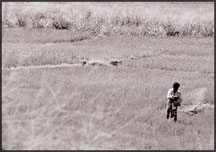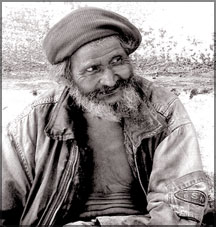 ‘Everyone
has a story’ ‘Everyone
has a story’
By Sajitha Prematunge
[email protected]
“By-force” was lying lethargically on the Kavichchi . It was her
snoozing time she said. “Honey” her Persian cat passed an arrogant look
as she went on her cat walk, not heeding my “se se” pleas to draw her
attention. Is it just a coincidence or are all writers animal lovers? I
was told by Isankya Kodithuwakku that she has five cats - including
“By-force” - and the labrador called “Chico”.
In spite of his daunting appearance it turned out that Chico was a
harmless fellow. “By-force” is a stray, who used to walk the walls
around the house. She eventually cozied herself into our house. So we
call her “By-force.”
Isankya Kodithuwakku received her primary education in Japan and
South Korea. In spite of the crucial decision to switch from mathematics
to creative writing, at Kenyon College, USA and later making a name for
herself in the field of Sri Lankan English writing, she defied her
parents’ worst fears of having to face a ‘dire future’ by winning the
prestigious Gratiaen Award in 2006, in the short story category.
She explained that she had plunged into poetry first, since it did
not require the engagement of long hours, but at the same time poetry
didn’t allow her to engage in various experiments involving dialogue and
narration. The story The Banana Tree Crisis was based on her need to
experiment. “I don’t write much poetry now, I’m not very fond of
poetry.”

In fact she admitted she is quite fond of novel. “ I’m not a short
story person.” The Banana Tree Crisis is prominent for its long short
stories. She believes that short stories have space constraints and
explained that only one theme at a time can be dealt with, in a short
story. “It’s not suitable for a complex culture like Sri Lanka.”
When inquired whether she was influenced by her father - Karunasena
Kodithuwakku - she said that her parents have been influential not in
terms of writing but in terms of her inherited sense of story telling,
especially her mother. She said that she has learned to take into
account both sides of the story from her father. “What I write about
invariably becomes what they talk about.”
Her first collection The Banana Tree Crisis can be considered as a
comfortable middle between comedy and a more serious tone of voice.
Although she says the themes that she most prefers to deal with are
themes of war and violence, displacement and feminist issues, she does
not overload on gravity and bleakness of narration, but instead presents
the theme through the weaving story line.
The first story of the collection and in fact the title story The
Banana Tree Crisis starts on a comic tone but later sheds the comedy to
give way to the story. When asked whether she had not tried her hand at
comedy she claimed that she did attempt it with The Banana Tree Crisis
but admitted that “outright humour and satire do not work for me. So I
don’t think that I would try that again” contented with a happy middle.
An accusation levelled at most Sri Lankan English writers is that
they write about places they know nothing about. But in spite of the
fact that she was educated abroad, as the judges of the Gratiaen
themselves have pointed out, the settings of The Banana Tree Crisis
literally spans the four corners of the island in terms of geographical
setting’, its themes ranging from issues of war, class discrimination,
political corruption, domestic violence and childlessness.
She believes that her ability to relate to characters of various
social strata in various walks of lives, comes from her travel
experience. “I have travelled and seen a lot of Sri Lanka. Moreover the
work I conducted with “Sarvodaya” gave me a lot of exposure. It’s true
that I am not an expert and I have not interacted with these people. I
have left that to my imagination.”
She explained that writing is not solely about what you observe, but
what you also figure out about another person’s life. She said that it’s
mostly a guessing game. “An artist is supposed to derive what goes on in
the lives of others. Everybody has a story.”
Another interesting characteristic is that there seems to be a
conflict of opinions, even within the collection itself. In The House in
Jaffna she gives a bleak view of war torn Jaffna and sends Mr. Nadarajah
back to England, with no hope of ever returning to Jaffna, his original
home.
It gives the impression that the writer is completely against the
whole scenario of war in Sri Lanka, whereas Isankya totally subverts the
reader’s expectations in “What I carried” . Here she brings to light the
misconceptions about the ‘Soldier’.
She starts the story in the same tone as that of “The House in Jaffna”
. The protagonist is very decided about the sinisterness of the
‘Soldier’ and the narration is more potent because it is in the first
person, making the reader believe that it truly reflects the opinions of
the writer. But at the end the protagonist sheds her misconceptions out
of disillusionment. Isankya explains that the stories reflect her own
impressions of ‘soldiers’.
“When you are young you tend to regard people in terms of black and
white. Either they are good or bad. People have different perspectives
of soldiers.” Accordingly she draws a parallel between the soldiers and
the birds in “What I carried” . “There are bad birds but there are also
good birds.”
Ultimately when I asked whether she thinks she will be able to prove
her parents wrong, she said, “I think it has already happened.” She
believes that her parents are the same as most other Sri Lankan parents.
“They think you will succeed only if you become a doctor, lawyer or
an engineer. There are lots of other avenues that Sri Lankans have not
explored. Education in Sri Lankan is exam oriented and the students are
only concerned about getting something in their CVs. Sri Lankan society
doesn’t accept arts, only doctors and lawyers.” Finally she explained
that the time is now opportune for parents to change their outlook.
And as a final word of advice to amateur writers she said that they
should not write for the mere purpose of publishing and should not focus
on an audience. “Or you are in danger of thinking about the people you
need to please.”

Emily Dickinson - nun of Amherst
American lyrical poet and a recluse, Emily Dickinson was born in
Amherst, Massachusetts, to a family well known for educational and
political activities. Dickinson’s mother suffered from depression,
because of which her relationship with her daughter was distant.
Dickinson was educated at Amherst Academy and at the Mount Holyoke
Female Seminary. Around 1850 she started to compose poems. The style of
her first efforts was fairly conventional, but after years of practice
she began to experiment.

Often written in the metre of hymns, her poems dealt not only with
issues of death, faith and immortality, but with nature, domesticity,
and the power and limits of language. Her lyric poems captured
impressions of particular moments, scenes or moods, and she
characteristically focuses upon topics such as nature, love, immorality,
death, faith, doubt, pain, and the self.
Dickinson found irony, ambiguity and paradox lurking in the simplest
and commonest experiences. The materials and subject matter of her
poetry are quite conventional. Her poems are filled with robins, bees,
winter light, household items, and domestic duties.
These materials represent the range of what she experienced in and
around her father’s house. She used them because they constituted so
much of her life and, more importantly, because she found meanings
latent in them. Though her world was simple, it was also complex in its
beauties and its terrors.
She never married and withdrew from social contact and devoted
herself in secret to writing. In her own work she was original and
innovative, but did draw upon her knowledge of the Bible, classical
myths and Shakespeare for allusions and references. She used popular
contemporary church hymns, transforming their standard rhythms into
free-form hymn meters.
From 1858 Dickinson assembled many of her poems in packets of
‘fascicles’, which she bound herself with needle and thread. A selection
of these poems appeared in 1890. Only seven of Dickinson’s some 1800
poems were published during her lifetime, five of them in the
Springfield Republican .
Dickinson’s poetry is challenging because it is radical and original
in its rejection of most traditional nineteenth-century themes and
techniques. Her poems require active engagement of the reader, because
she seems to leave out so much with her elliptical style and remarkable
contracting metaphors.
But these apparent gaps are filled with meaning if one is sensitive
to her use of devices such as personification, allusion, symbolism and
startling syntax and grammar.
Emily Dickinson died at the age of fifty-five on May 15, 1886. She
had suffered from Bright’s disease or chronic nephritis since 1884.
Compiled by Ishara Mudugamuwa
[email protected]

Poisoned grains

An ancient farmer of our kin
Bought some grains from a foreign swindle
Little he knew they’re poisoned with sin
A relentless victim of a drastic dwindle
Unaware of the ominous season to come
He ploughed the loam oh how he strived?
Seeing the fleshy plants they have become
The farmer dreamt of a field thrived
The harvest was vast not marred by weeds
The taste was bitter unworthy of his strains
Being fed by the bitter mutant seeds
Our children have grown allergic to the grains
Charitha Adikariarachchi
Beyond reach

On a sandy beach in a sun-sinking evening
The horizon has drowned her colours of bright
Waves pounce with a sweet tender murmur
Calling upon her distant beach
A boy aged seven making his castle of sand
Where he makes his kingdom
There he crowns himself the king
Decorated with shells from beyond
A wave on fire reaches the shore with a roar,
The palace of sand vanishes, all its pride
No kings, no kingdoms, no kingships further,
Hopes float with the foams over
Will he find the reality of life
Or will he try his luck again
I turned aside making up my mind
While I saw he hasn’t given up his thought
S.R.G. Punsara Medani
The happy beggar

Saw him seated on the payment day in and day out,
His palm outstretched to anyone passing by,
One rupee, two rupees and ten rupees,
He accepts the money with a smile,
His face is happiness itself,
Not thinking about his family
Never worrying about the world,
Nor about the weather,
During sunny days he is seated there,
During rainy days he takes shelter,
No cares, no worries, never grumbles,
About the cost of living,
From meal to meal he survives,
His heart is carefree,
A happy beggar he seems to be.
Shanthi Rubawathy Vivekananthan |
